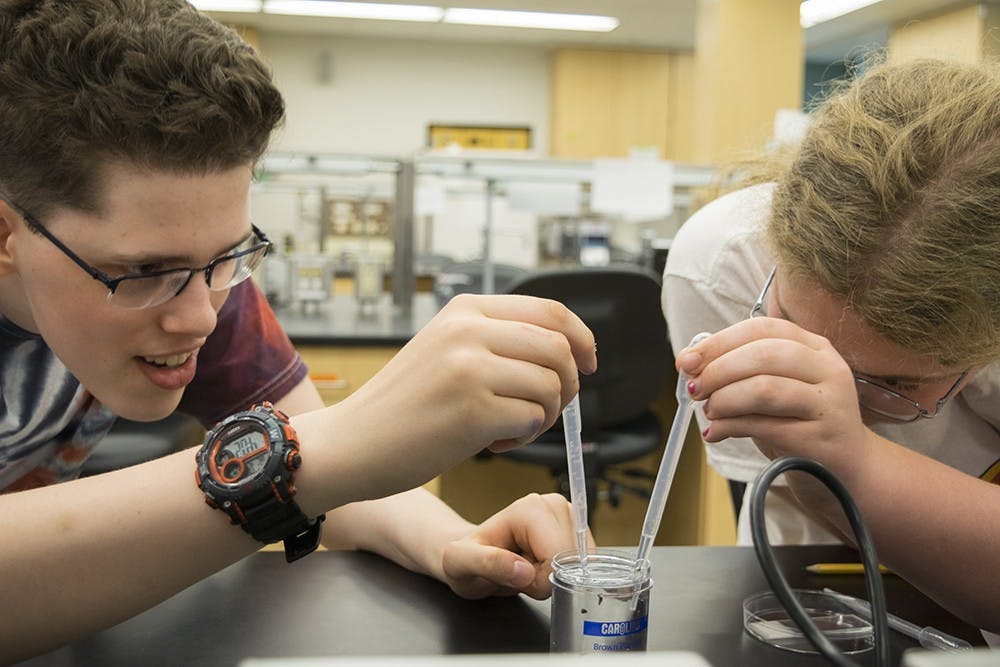“...Weird...”
Grania Whelan adjusts the lens of her microscope as a planarian scoots across the slide.
“Look at how translucent it is,” she says, her eyes pressed to the microscope.
The planarian, a dull grey flatworm, makes a bid for the edge of the slide. But Whelan deftly scoops it up with her pipette.
She works with the confidence of someone who’s spent much more time in the lab than she actually has. Whelan is only 15 years old. She’s part of this year’s IU Foundations in Science and Mathematics, a program where IU graduate students teach local middle school and high school students in STEM classes ranging from Whelan’s zoology class to forensic science.
Nearly 140 students from 25 different schools and 11 Indiana counties convene in Bloomington for two weeks for the program, which has been running since 2011. It gives students a head start learning in a college environment.
The program is designed to expose students to a variety of STEM courses.
“They’re just getting their toes wet coming away saying, ‘This is cool, this is something I can see myself doing,” said Jason Hemann, a member of the administrative team at FSM.
Across the campus from Whelan, Parker Schnurpel, 14, waits for his Introduction to Programming course. He found out about this class after taking a chemistry class last year. He said the best part of the program has been meeting all the new people in his class.
“During middle school in that programming class, I programmed a lot. My friend programs, so I just took an interest from there,” he said.
On his first day, he was afraid the class might be hard. Now that he’s two classes in, he’s feeling comfortable with the material.
Making the material accessible to students is one of the challenges Craig Sanders, his teacher, faces.
He’s a doctorate student in the Department of Psychological and Brain Sciences and one of the 36 graduate students who teach the courses for the program.
“I’ve heard that Einstein said if you really understand something, you should be able to explain it to your grandmother,” he said. “So if you really understand something, you should be able to put it in very basic terms.”
He’ll teach his students about Python, a coding language, and teach them how to create programs from tic-tac-toe games to abstract art.
“It’s an opportunity to give back to the community,” he said. “And being a PhD student is hard, things can get really complicated, so it’s nice to go back to basics sometimes.”
FSM gives the graduate students a chance to earn experience teaching, developing their own syllabi and writing grants. It also allows them to pass on their knowledge to the next generation.
FSM leaders are working to make the program more accessible to students from all backgrounds. Although the program costs $25 for each class that students choose to take, there are scholarships available to alleviate the cost.
Recent grants, like one from the Women’s Philanthropy Council, will help FSM incorporate students from diverse backgrounds.
“People in the STEM fields really have a passion,” Hemann said. “It’s one of the things we can miss out, that opportunity to share that.”






